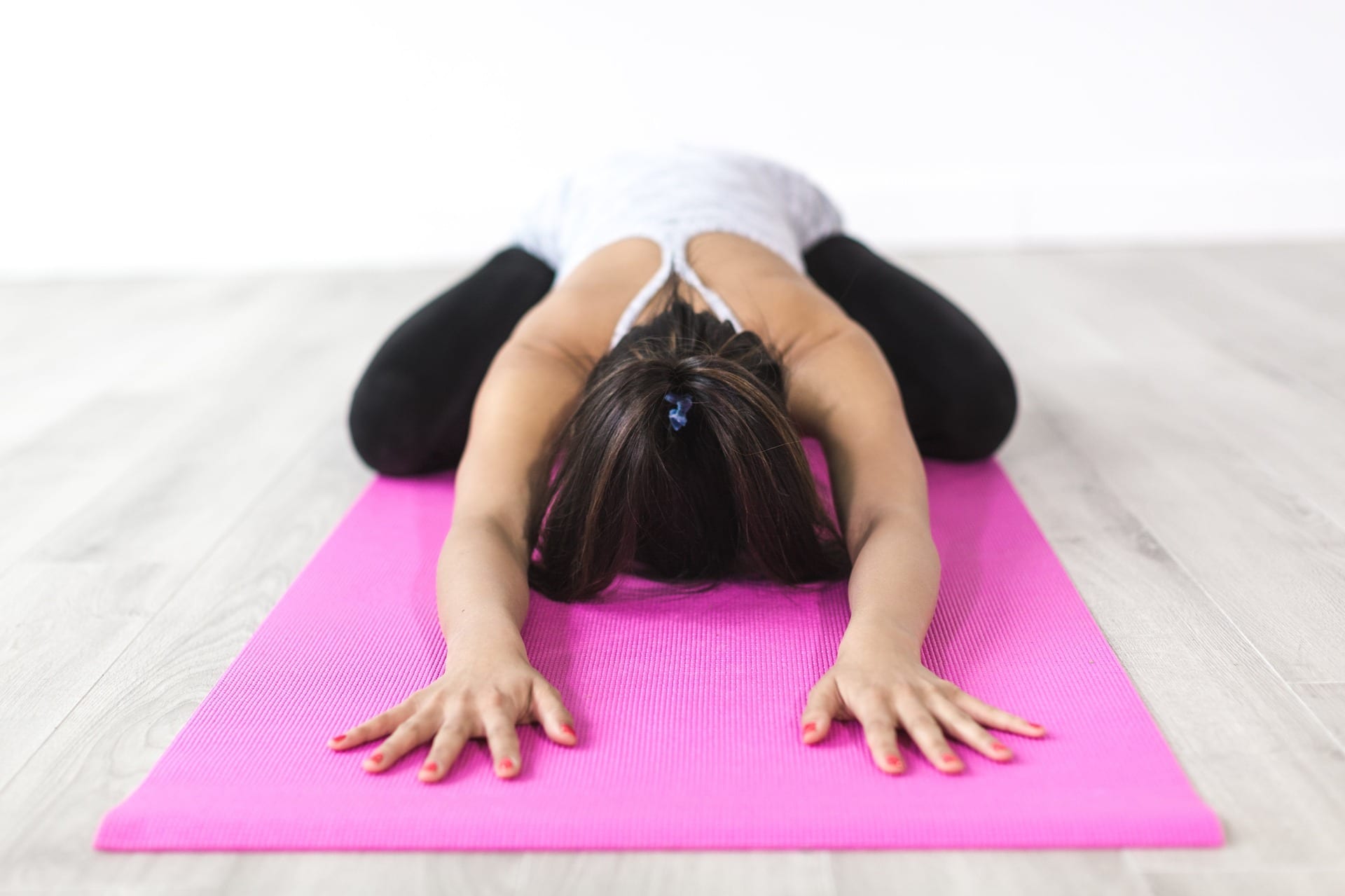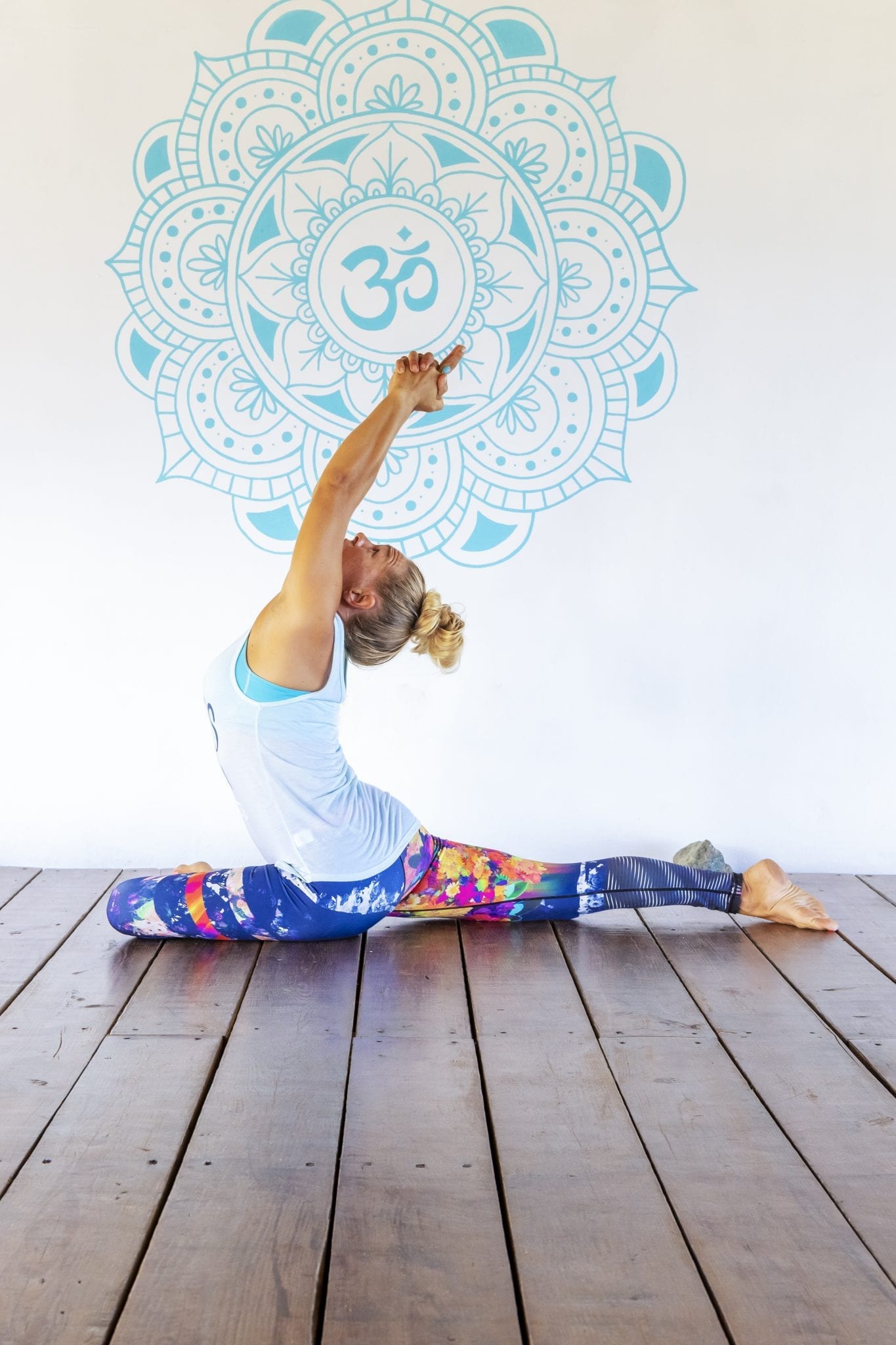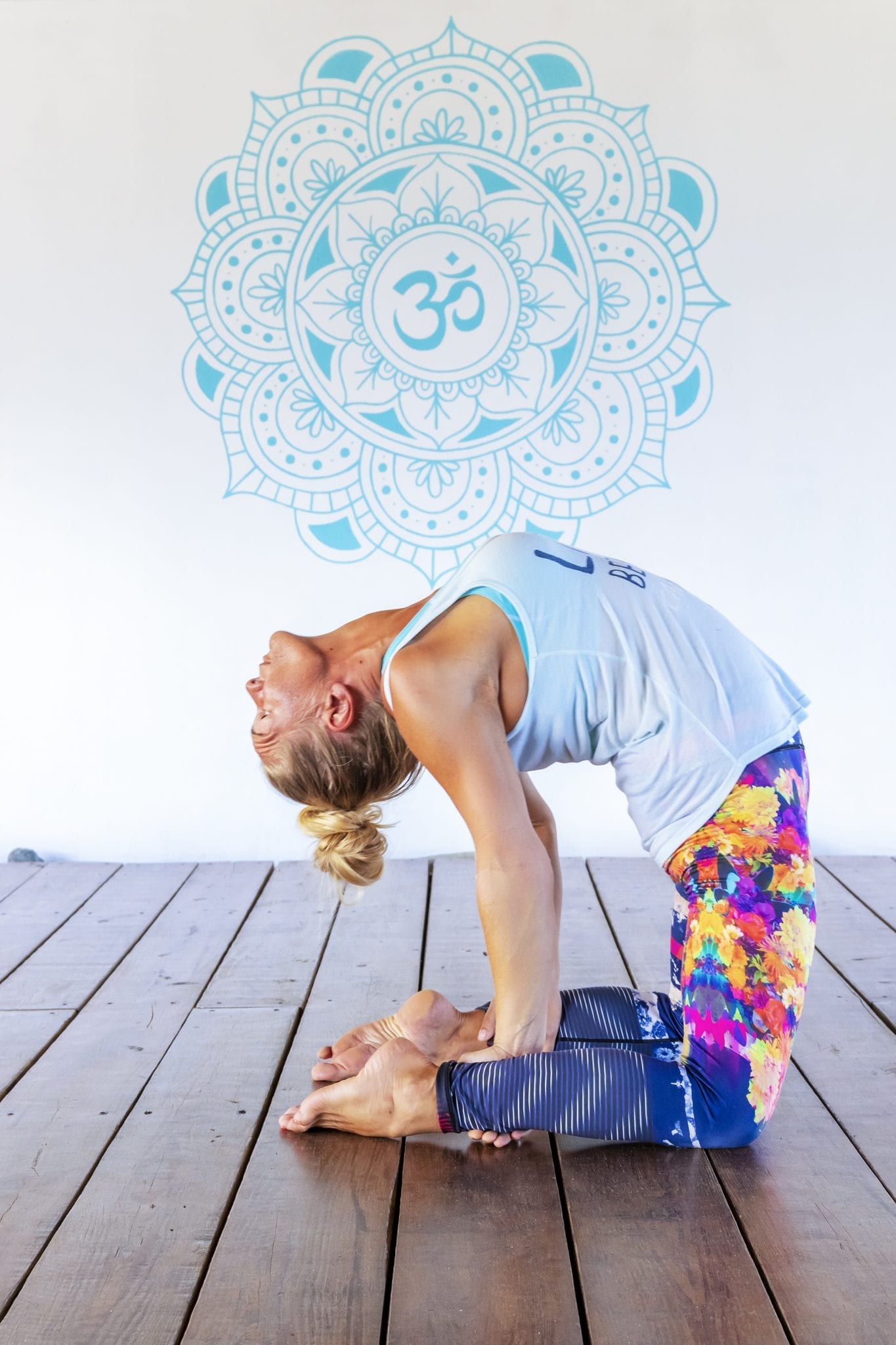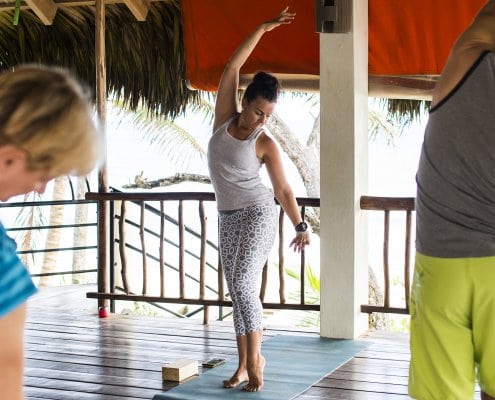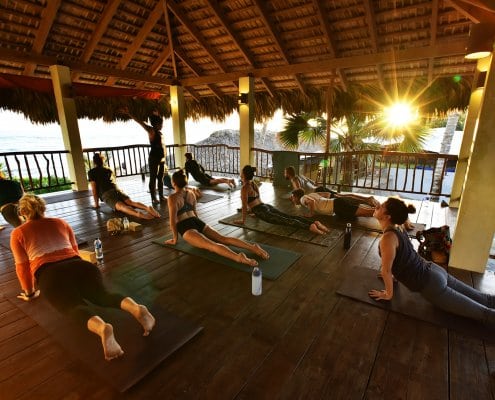How to deal with emotions in a yoga class
By Moraima Capellán Pichardo
Dealing with emotions in a yoga class is about understanding.
A sudden surge of emotions, adrenaline and even insecurities are not uncommon in a yoga class or on your mat. The nature of the practice of yoga — the emphasis of a mind and body connection through the physical practice — can bring up feelings that may have been forgotten or un-dealt with.
This is true for any practitioner, beginner or advanced. But it may be especially powerful for anyone coming to their mat with trauma, grief, and or recovering from physical and mental ailments.
Yoga is a safe space. It is because of this nurturing exploration that many physicians recommend it to cancer survivors and other patients dealing with intense health problems.
At the Yoga Loft, we always aim to provide an inclusive class to all students devoid of any judgment. We come from all walks of life and our only rule is a safe curiosity to learn about and explore yourself. Dealing with emotions in a yoga class is a part of this process.
When I underwent open-heart surgery, my local yoga studio was the only place that I felt secure enough to begin my road to recovery. Within that first beginner’s vinyasa class, I experienced a plethora of emotions and physical sensations. At times, I was overwhelmed by the fear of my rising heartbeat, the tightness of my chest and weakness of my arms. But during Savasana, the final resting pose, my body felt a release that I had never felt before. I was overcome with gratitude to my body and the strength of my mind to persevere. I felt lighter.
So whether you are coming to a yoga mat, recovering from a dark period or as an athlete looking for something different, a physical yoga practice can help you uncover the acceptance that lives within you.
Here are my suggestions and reminders for any practice on dealing with emotions in a yoga class:
Breathe
Your teacher might cue each breath or they might not. Your teacher might introduce Pranayama practices (breath techniques) at the beginning or end of class. But if you take anything out of the asana yoga practice is to take deep, full breaths whenever possible. When any outside thoughts come up, and they will, come back to your breath. Use your breath to be present.
Your inhalation will help you expand, your exhalation will help you release.
Don’t be afraid to take a break
Yoga is not a competition. Yoga is not a performance. The only person you need to ever impress is yourself. If by the fifth sun salutation, you need a child’s pose. Please, take it!
The Asana practice was created to maintain a healthy body in preparation for meditation. Certain groups of poses might elicit a different response.
What you might experience in a group of postures
Embark on a journey through the foundational elements of yoga as we explore the significance and transformative potential of standing poses and forward bends. Here’s what you might experience as you integrate these postures into your practice.
Standing Poses
Usually done at the beginning of an Asana sequence, standing poses, such as mountain pose, the warrior series: warrior I,II, and III and goddess pose, challenge you to find your roots. Standing poses tend to work with our legs and feet. These core postures, especially mountain pose, remind us of the importance of a long, tall spine. It is always more important throughout any postures, to find that sense of balance by focusing on lengthening your spine.
If you feel unstable, widen your stance. Take up more space and root down with your feet as you expand upward.
Forward bends
Forward bends, whether standing or seated, move us physically inward. Our body naturally gives in in order to protect us. This can be a great opportunity to direct our mind inwards to our true self. However, forward bends can be challenging if one has tight hamstrings and it can feel like you will never be able to open them up.
There’s a misconception that you have to be flexible in order to “do yoga.” This is, of course, not the case. My teacher always says that claiming that you are not flexible enough to do yoga is the same as saying you are too dirty to take a shower. Unfortunately, plenty of students feel discouraged when they “can’t touch their toes.”
Bend your knees.
I’ve been there and chances are that the yogi next to you has been there as well. Opening your hamstrings can take a long time, focus on keeping your chest open and avoid collapsing onto your shoulders. Remember: long, tall spine.
Hip Openers
Male practitioners sometimes dread pigeon pose but if you sit at a desk or stand for long periods of time during the day, chances are, you have tight hips. All of us store a lot of tension, stress and fear in our hip and pelvis area.
This part of our body is tied to our stability and our ability to provide for ourselves the basic human needs such as shelter, food and sex. This area is primal.
Postures that target the hips can feel downright painful. It is of utmost importance to focus on the correct alignment of your hips before you attempt to go any deeper. If you are unsure or something does not feel right, ask your instructor. At the Yoga Loft, we always encourage questions, because your safety is important.
When any strong emotions in a yoga class come up, give yourself the freedom to explore them and remind yourself that you are worthy of love and security.
Twists
The wonderful part about twists is that they can be done at any point in your practice. Twists neutralize your spine. If you come into a twist from a cool space, twists can give energy and warmth. If you come into a twist from a place of heat, they can help cool down the body and mind. Deep and intense twists can provide a release of spinal tension but most importantly, twists help maintain a healthy spine.
Advance twists take time. It can take months and years for any yogi to feel ease in twists that include binds and/or locks. Be patient and explore each range of motion.
Heart Openers or Backbends
Social media sites are filled with advanced yogis performing extreme backbends where it seems as if their spine is a spaghetti noddle. Back bends tend to elicit two responses: fear of the unknown, which causes retreat or an obsession towards going deeper and finding that Instagram worthy shot. Backbends or heart openers, as they are also known, must be approached with intention and correct alignment.
Do not be afraid to slow it down and use props. You are always welcomed to stay longer in a pose and breathe through the sensations that it brings. With heart openers this can be even more useful since it takes a significant amount of determination for the chest and heart area to release and find space.
When I first began, a baby cobra pose was enough for me to feel like my chest would rip open. Give yourself time to find that wheel pose that you might aiming for. Backbends also provide a release of adrenaline so they are a great way to boost energy.
Inversions
Some poses come easier than others but for the majority of yogis and yoginis, the mere mention of an inversion brings forth nervous side-glances and fear. Even if you haven’t been able to fully stand on your hands, you’ve been practicing inversions in small doses. Downward facing dog is an inversion, as is any posture where your heart is below your waist.
There are many reasons why those fun and advanced poses are added towards the end of a sequence. If you’ve been practicing for 40 minutes, you’ve built heat, strength and the confidence to turn your world upside down and see things from a different perspective.
Push past your comfort zone here. And do not hesitate to use props such as an empty wall or blankets for cushion in case you fear falling. If you do fall? Laugh it off, the human body is silly and having control at all times does not allow room for growth.
At the Yoga Loft, we provide a variety of intimate yoga retreats in the Dominican Republic. Our yoga teachers are eager to help you explore and deepen your yoga practice.
If you find yourself in need of a space to connect with your body and mind, the best option might be to get away from any and all distractions.
Questions? We got you!
How can I prepare mentally for the emotional release that might occur during yoga?
Preparation for emotional release involves setting intentions before your practice, acknowledging that emotions may surface, and giving yourself permission to experience them without judgment. Practicing mindfulness and meditation can also help in creating a mental space where emotions are allowed and accepted as part of the healing process.
What should I do if I experience overwhelming emotions during a class and can’t focus on the practice?
If emotions become overwhelming, it’s okay to pause and take a moment for yourself, whether that means sitting in a comfortable pose, stepping out of the room, or using breathing techniques to ground yourself. Communicate with your instructor if you feel comfortable doing so; they can offer support and guidance.
Can yoga help in dealing with long-term emotional or psychological issues?
While yoga can be a powerful tool for managing stress and emotions, it’s important to work with healthcare professionals for long-term emotional or psychological issues. Yoga can complement therapeutic treatments by providing a way to practice mindfulness, reduce stress, and improve body awareness, but it should not replace professional medical advice or therapy.
How can I ensure I’m practicing hip openers and heart openers safely, especially if I have a history of injuries?
Safety in hip and heart openers begins with listening to your body and respecting its limits. Start with gentle modifications and use props to support your alignment. If you have a history of injuries, consult with a healthcare provider and inform your yoga instructor so they can offer appropriate modifications. Focus on gradual progress rather than forcing a pose, and prioritize alignment over depth.


